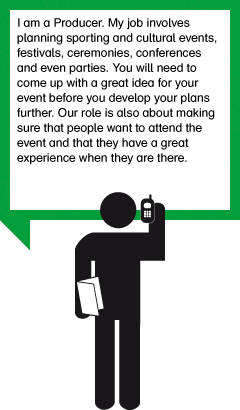Hold a cultural event or activity to celebrate the Games
If you choose Option C your first task is to decide on a cultural activity that will be suitable for your local community with your class. You may want to choose more than one. The Olympics are about much more than just sport and this project is part of the Cultural Olympiad. Think about what sort of things could make up a cultural event? You might want to devise your own event like a performance, carnival or fashion show or you might want to host a public screening of the Games or design a small scale stadium for your own sports day.

Five step design process
In Steps 1, 2, & 3, the Preparation Stage, children will explore their local area using mapping and discussion activities in order to find a suitable site to locate their cultural activity. You will be guided through taking a field trip to the site, using a downloadable urban appraisal sheet, and how to devise a design brief for the venue. In Step 4, the Design Stage, you will be guided through two processes: Concept Design and Design Development using a variety of techniques to enable your class to develop their design ideas. Step 5 will help you to showcase your project and think about the Legacy plans for your building.

How long will it take?
Have a quick look through the five steps. You will need to allow half a day for a site visit and the Design activities in Step 4 can each take up to one hour to deliver. The modelling activity does require more planning and preparation time and it is recommended that you deliver this over an entire afternoon or at least two separate lessons.

How much space do I need ?
Most of the activities can be delivered in a conventional classroom set up with the exception of the modelling activity in Step 4. For this you may want to revise the layout of your classroom getting pupils to work in project groups. It’s also a good idea to set a table aside for materials and equipment.

